Bringing Back the GAINTS
Muse Science Magazine for Kids
|April 2023
Scientific Efforts To Restore The American Chestnut Tree

Chief forester Hermann Merkel was worried. In the summer of 1904, he noticed areas of cracked, dry bark on the American chestnut trees in New York Zoological Park (known today as the Bronx Zoo). Tiny orange-red bumps dotted the bark like an angry rash. e injured bark was forming a canker—an area of dead tissue. e canker would eventually encircle the trunk and strangle the tree. Merkel suspected it was a fungus, but not one he’d ever seen before.
Merkel was right to worry. Cryphonectria parasitica, also known as the chestnut blight, ended up killing an estimated four billion American chestnut trees. It was a devastating loss, especially in the Appalachian Mountains. ere, people depended on the chestnut for food, livestock feed, and timber. In these Eastern forests, American chestnuts were giants, growing as tall as 100 feet (30 meters), with trunks 13 feet wide (four meters). Some were at least 600 years old.

How could a fungus kill so many trees? Cryphonectria parasitica is not native to North America. It likely came to the US as a stowaway on imported Japanese chestnut trees. Japanese and Chinese chestnut trees often survive the blight. Scientists call this “blight resistance.” Because Asian chestnuts evolved alongside of Cryphonectria parasitica, they had thousands of years to adapt to it. When the fungus invaded the bark of one of Merkel’s trees—likely through an animal’s scratch or an insect’s burrowing—the American chestnut had no defense.
यह कहानी Muse Science Magazine for Kids के April 2023 संस्करण से ली गई है।
हजारों चुनिंदा प्रीमियम कहानियों और 10,000 से अधिक पत्रिकाओं और समाचार पत्रों तक पहुंचने के लिए मैगज़्टर गोल्ड की सदस्यता लें।
क्या आप पहले से ही ग्राहक हैं? साइन इन करें
Muse Science Magazine for Kids से और कहानियाँ
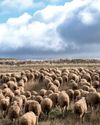
Muse Science Magazine for Kids
ANIMAL FIREFIGHTER TO THE RESCUE
Can animals help manage the risks of deadly wildfires?
3 mins
Muse July 2025: The Story Behind Wildfires

Muse Science Magazine for Kids
FIRE DANGER
WHY THE RISK OF WILDFIRES KEEPS GROWING
4 mins
Muse July 2025: The Story Behind Wildfires
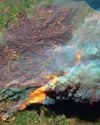
Muse Science Magazine for Kids
The Miller NEW Normal
WHAT TODAY’S WILDFIRES TELL US ABOUT OUR FUTURE
8 mins
Muse July 2025: The Story Behind Wildfires
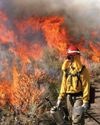
Muse Science Magazine for Kids
WOMEN AND FIREFIGHTING: A GOOD FIT
Jessica Gardetto is a firefighter. Her father was, too. “I grew up with my dad coming home smelling like wildfire and covered in soot,” she says.
1 min
Muse July 2025: The Story Behind Wildfires

Muse Science Magazine for Kids
What is happening on your fingertips when they get all wrinkly in a hot tub?
—Felix G., age 10, Montana
1 mins
Muse July 2025: The Story Behind Wildfires

Muse Science Magazine for Kids
WHEN the SMOKE CLEARS
THE LINGERING EFFECTS OF THE RECENT PACIFIC PALISADES AND ALTADENA EATON FIRES
6 mins
Muse July 2025: The Story Behind Wildfires

Muse Science Magazine for Kids
PICKING TEAMS
Keep it fair with a strategy that relies on geometry.
2 mins
Muse July 2025: The Story Behind Wildfires
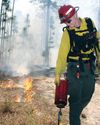
Muse Science Magazine for Kids
SHAN CAMMACK
WILDLIFE BIOLOGIST AND FIRE SAFETY OFFICER
3 mins
Muse July 2025: The Story Behind Wildfires
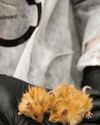
Muse Science Magazine for Kids
Scientists Create Mice With Woolly Mammoth-Like Fur
RESEARCHERS AT A COMPANY IN TEXAS ARE WORKING TO CREATE A LIVING ANIMAL THAT RESEMBLES THE EXTINCT WOOLLY MAMMOTH. Recently, they produced mice with traits of the large mammal. The mice all have coats with mammoth-like fur, and some of the small mammals also have genes that help them store fat. Both features would help the animals survive in the cold Arctic, where the woolly mammoth once lived.
1 min
Muse July 2025: The Story Behind Wildfires

Muse Science Magazine for Kids
Cool Sunshade Added to the Nancy Roman Space Telescope
THE NANCY ROMAN SPACE TELESCOPE IS A NEW TELESCOPE THAT NASA IS BUILDING AND WILL LAUNCH INTO SPACE, LIKELY IN EARLY 2027.
1 min
Muse July 2025: The Story Behind Wildfires
Translate
Change font size

